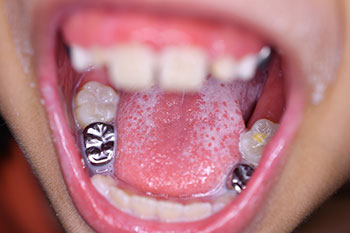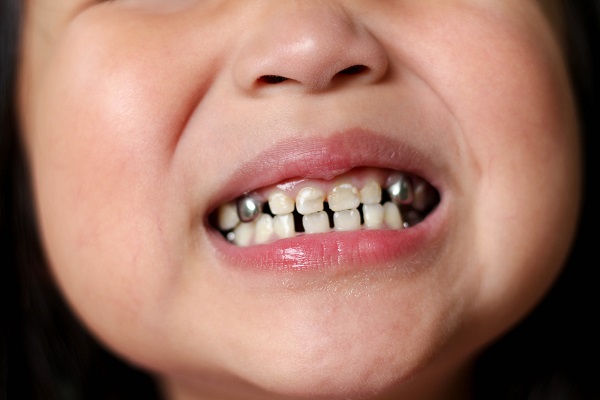Tooth Crown for Kids: Ensuring Bright Smiles!
Last Updated on 7 months by DR. ALBIN SIPES
Tooth crowns for kids are dental caps placed over decayed or damaged teeth. They restore function and prevent further decay.
Dental crowns for children, often referred to as pediatric crowns, play a crucial role in maintaining oral health. When a child’s tooth is severely decayed or broken, a regular filling might not be enough. In such cases, dentists recommend a crown to protect the remaining tooth structure and maintain proper chewing function.
These crowns are designed to be both durable and temporary, as they will eventually be replaced by the child’s permanent teeth. Ensuring the best dental care for your child includes understanding the importance of crowns and how they contribute to a healthy smile. Early intervention with crowns can prevent more serious issues and help maintain your child’s oral health as they grow.
Tooth Crowns For Kids: The Basics
When a child’s tooth gets damaged, a tooth crown can help. It’s like a little cap for teeth. It protects, covers, and restores the shape of your kid’s teeth when fillings don’t solve the problem.
What Is A Tooth Crown?
A tooth crown is a custom-made cover for teeth. It can be made of different materials and fits over the whole tooth. Dentists use crowns to fix teeth that are broken, worn down, or have cavities.
Pediatric Dental Crowns: Purpose And Types
Kids might need crowns for many reasons. Crowns protect weak teeth or restore broken ones. They also support teeth with large fillings and keep a dental bridge in place. For baby teeth, crowns can save a tooth that can’t hold a filling.
| Types of Crowns | Material | Benefits |
|---|---|---|
| Stainless Steel | Metal | Durable, cost-effective |
| Composite Strip | Resin | Matches tooth color |
| Polycarbonate | Plastic | Good for front teeth |
| Porcelain | Ceramic | Looks natural |
Dentists pick the best type based on the tooth’s need. Stainless steel crowns are common for back teeth. Composite, polycarbonate, or porcelain crowns are better for front teeth because they look like natural teeth.
Identifying The Need For A Crown
Little smiles need big care, especially when it comes to dental health. A crown may be the answer for a damaged tooth. Let’s explore when kids might need one.
Common Indicators For Children’s Dental Crowns
Tooth decay can lead to the need for a crown. Broken teeth from falls or sports are another sign. Sometimes, after a root canal, a crown is necessary to protect the tooth.
- Large cavities that fillings can’t fix.
- Chipped or broken teeth that cause pain or sensitivity.
- Teeth with extensive wear from grinding or acid erosion.
Consultation And Diagnosis
A dentist will check your child’s tooth to decide if a crown is needed. They use tools to examine and may take x-rays.
| Step | Action |
|---|---|
| 1 | Visual exam of the tooth. |
| 2 | Feeling the tooth for cracks. |
| 3 | Checking bite and alignment. |
| 4 | X-rays if needed. |
They’ll discuss options and explain the crown process. Your child’s comfort and health come first.
Materials Used In Pediatric Crowns
Choosing the right material for pediatric crowns is important. Kids need strong, safe, and good-looking crowns. Let’s explore the materials used.
Stainless Steel Crowns: Durability And Cost
Stainless steel crowns are popular for kids. They are strong and last long. These crowns are also less expensive than others. They work well for back teeth.
- Very durable
- Cost-effective
- Best for molars
Tooth-colored Options: Aesthetics And Material Choices
Some parents want crowns that look like real teeth. Tooth-colored crowns are great for this. They come in different materials.
| Material | Pros | Cons |
|---|---|---|
| Composite | Looks like real teeth, Fairly strong | Can wear down |
| Zirconia | Very strong, Looks very natural | More expensive |
| Ceramic | Good looks, Quite strong | Can chip or crack |
Each material has its own benefits and downsides. The choice depends on what matters most for the child and family.
The Procedure Explained
Understanding the steps involved in getting a tooth crown can help ease any worries for both kids and parents. A dental crown for a child is typically recommended to protect a tooth that is too damaged to support a filling or to maintain a dental bridge. Let’s walk through the process, ensuring you know exactly what to expect during your child’s visit to the dentist.
Preparation Steps For A Child’s Crown
Dental Exam: First, the dentist checks the tooth. They may take X-rays.
Choice of Crown: Different crowns are available. The dentist will suggest the best one.
Tooth Shaping: The tooth gets shaped. This is to fit the crown well.
Impression: The dentist makes a tooth mold. This helps create the right-sized crown.
Temporary Crown: A temporary crown is placed. This protects the tooth until the permanent crown is ready.
Fitting And Installation Process
Final Crown: The dentist receives the permanent crown. They check the fit and color.
Adjustments: If needed, the dentist makes small adjustments. The crown must fit perfectly.
Cementing: Once the fit is right, the dentist cements the crown onto the tooth.
Follow-up: Your child will have a follow-up visit. The dentist checks the crown and oral health.
Aftercare And Maintenance
Ensuring your child’s tooth crown stays in top shape is crucial. A well-maintained crown can protect your child’s tooth for years. Let’s explore the right aftercare and maintenance steps to take.
Post-procedure Care Tips
After getting a crown, kids may feel some discomfort. Here are tips to help them:
- Avoid chewy or sticky snacks.
- Use a soft toothbrush gently around the crown.
- Rinse with saltwater if the gums are sore.
- Give them pain relievers if the dentist suggests.
Longevity And Care Of Pediatric Crowns
Crowns for kids can last a long time with proper care. Follow these steps:
- Brush twice a day with fluoride toothpaste.
- Floss daily to prevent plaque buildup.
- Visit the dentist for regular check-ups.
- Protect the crown from hard foods.
Remember, a healthy crown means a happy smile for your child.
Mitigating Children’s Dental Anxiety
Many kids feel scared when they hear “dentist.” Especially for treatments like tooth crowns. It’s normal but can be eased. This section talks about mitigating children’s dental anxiety.
Techniques To Ease Fear Of Dental Work
Dental fear in kids is common but manageable. Here are some techniques:
- Tell-Show-Do: Dentists explain, show, and then perform the procedure.
- Positive Reinforcement: Praise and rewards help encourage kids.
- Distraction: Stories, music, or videos keep their mind off the procedure.
- Relaxation Techniques: Deep breathing helps calm nerves.
The Role Of Pediatric Dentists In Comforting Young Patients
Pediatric dentists play a key role. They are trained to handle kids’ fears. Their approach is gentle and friendly. They create a welcoming environment. This makes kids feel safe and less anxious.
| Technique | Description | Benefit |
|---|---|---|
| Child-Friendly Language | Using simple, non-scary words. | Makes procedure less intimidating. |
| Playful Interaction | Engaging kids in a fun manner. | Builds trust and eases anxiety. |
Dentists also educate parents. They share tips for preparing kids for dental visits. This includes reading books about dentistry, playing dentist games, and being positive about dental care. Together, parents and dentists can help kids overcome their fear.
Cost And Insurance Considerations
When parents consider dental crowns for their children, cost is a key factor. Insurance coverage can also impact the decision. This section explores the financial aspects of tooth crowns for kids. We aim to provide clarity on expenses and how to manage them.
Understanding The Costs Of Dental Crowns For Kids
Several factors affect the price of dental crowns for children. These include the type of material used, the dentist’s fees, and the geographic location of the dental office. Dental crowns can range from stainless steel, which is often the most affordable, to tooth-colored resin or ceramic, which can be pricier.
Parents should expect to pay anywhere from $300 to $1,500 per crown. Remember, prices can vary widely.
| Material | Cost Range |
|---|---|
| Stainless Steel | $300 – $500 |
| Tooth-Colored Resin | $600 – $1,000 |
| Ceramic | $800 – $1,500 |
Navigating Insurance Coverage And Payment Options
Many dental insurance plans cover a portion of the cost for kids’ crowns. Coverage typically ranges from 50% to 80% of the total cost. It is crucial to check with your insurance provider to understand your plan’s specifics.
- Review your insurance policy.
- Confirm the percentage covered for pediatric dental crowns.
- Check for any applicable deductible or yearly maximum.
For uninsured families, dentists often offer payment plans. Some also provide discounts for multiple procedures. Ask your dentist’s office about available options.
- Ask about payment plans.
- Inquire about discounts for multiple crowns.
- Consider third-party financing if necessary.
The Impact On Overall Dental Health
Tooth crowns for kids are not just about fixing a damaged tooth. They play a crucial role in maintaining a young one’s overall dental health. A crown restores a tooth’s shape, size, and strength. It ensures that a child can chew properly and smile confidently. Crowns also protect against further decay or damage. This helps keep a child’s oral development on track.
Benefits Of Crowns For Oral Health
- Prevents decay: Crowns shield the tooth from bacteria and acid.
- Restores function: Kids can chew without pain or difficulty.
- Improves confidence: A healthy smile boosts self-esteem.
How Crowns Contribute To Long-term Dental Well-being
Crowns support a child’s growing mouth. They save space for adult teeth to come in properly. This prevents misalignment. Properly aligned teeth are easier to clean and less prone to cavities. Crowns also reduce the need for more dental work in the future. They are a key investment in a child’s dental future.
When To Consider Alternatives
Deciding on dental treatments for kids can be tough. Tooth crowns are common. Yet, sometimes, other options might fit better. Let’s explore when to think about alternatives.
Cases Where Crowns May Not Be The Best Option
Not all dental issues in kids need a crown. Here are some situations:
- Mild tooth decay: Small cavities often need just a filling.
- Temporary teeth: If a baby tooth is close to falling out, a crown might not be needed.
- Sensitive teeth: Some kids’ teeth are too sensitive for crowns.
Exploring Other Pediatric Dental Treatments
There are different ways to keep kids’ teeth healthy. Let’s look at some:
- Fillings: Good for fixing small cavities.
- Dental sealants: Protect teeth from decay.
- Fluoride treatments: Strengthen teeth enamel.
Each child’s teeth are unique. A dentist can help choose the best treatment.
Conclusion
Choosing the right tooth crown for your child is essential for their dental health and overall wellbeing. It’s a decision that impacts not just their smile, but also their confidence. With the right care and choice, a tooth crown can be a durable, comfortable solution.
Remember, early dental care sets the foundation for a lifetime of healthy smiles.



